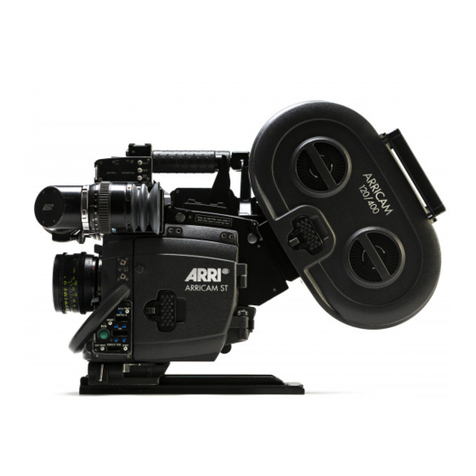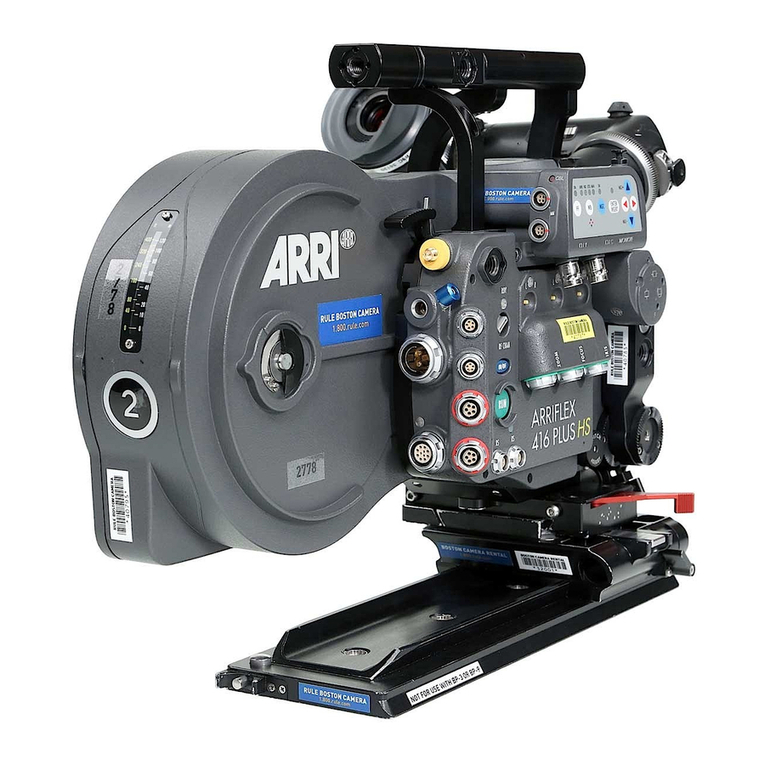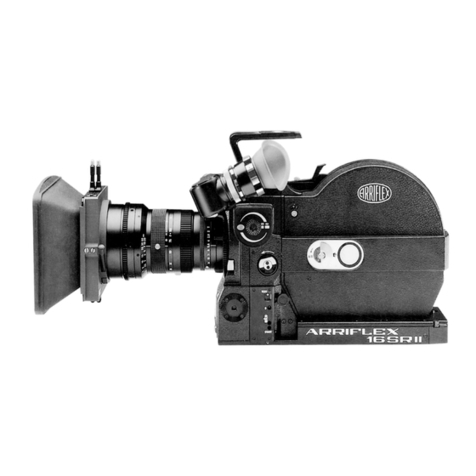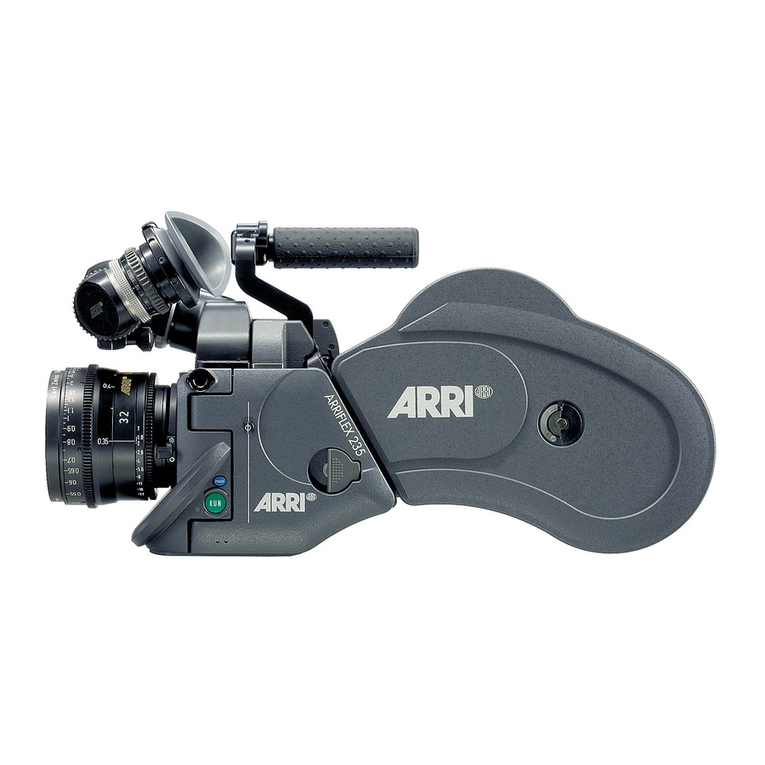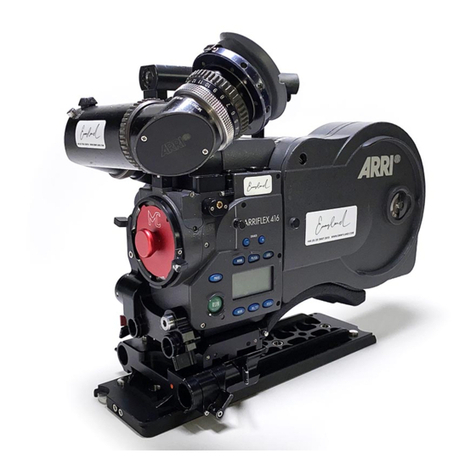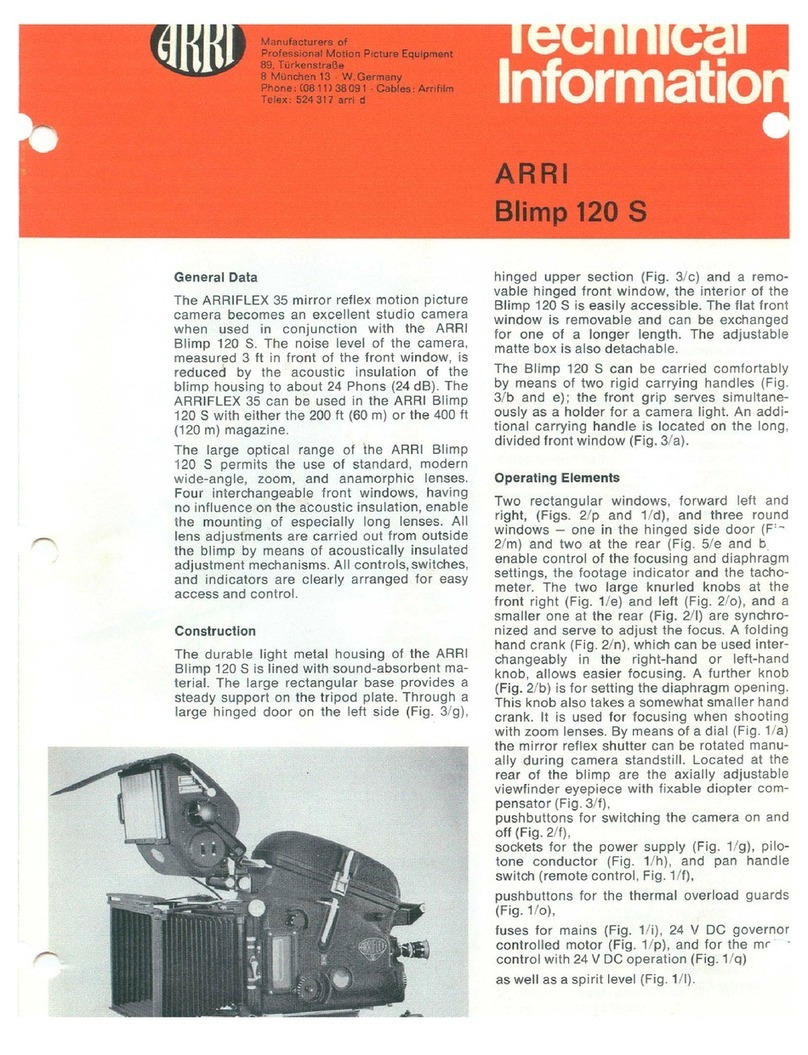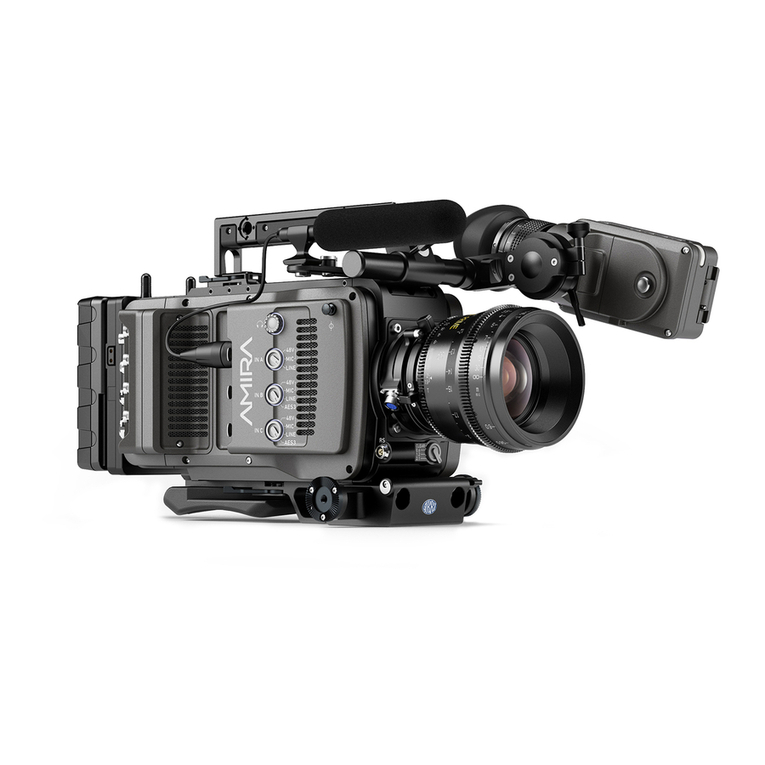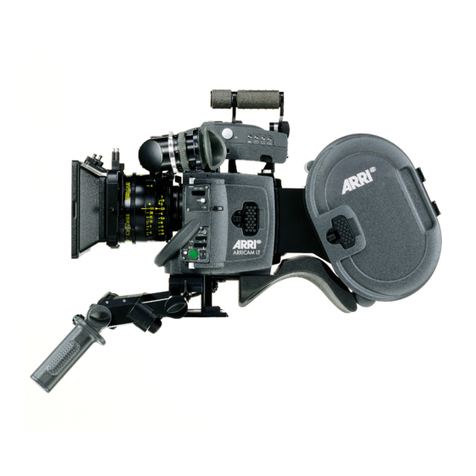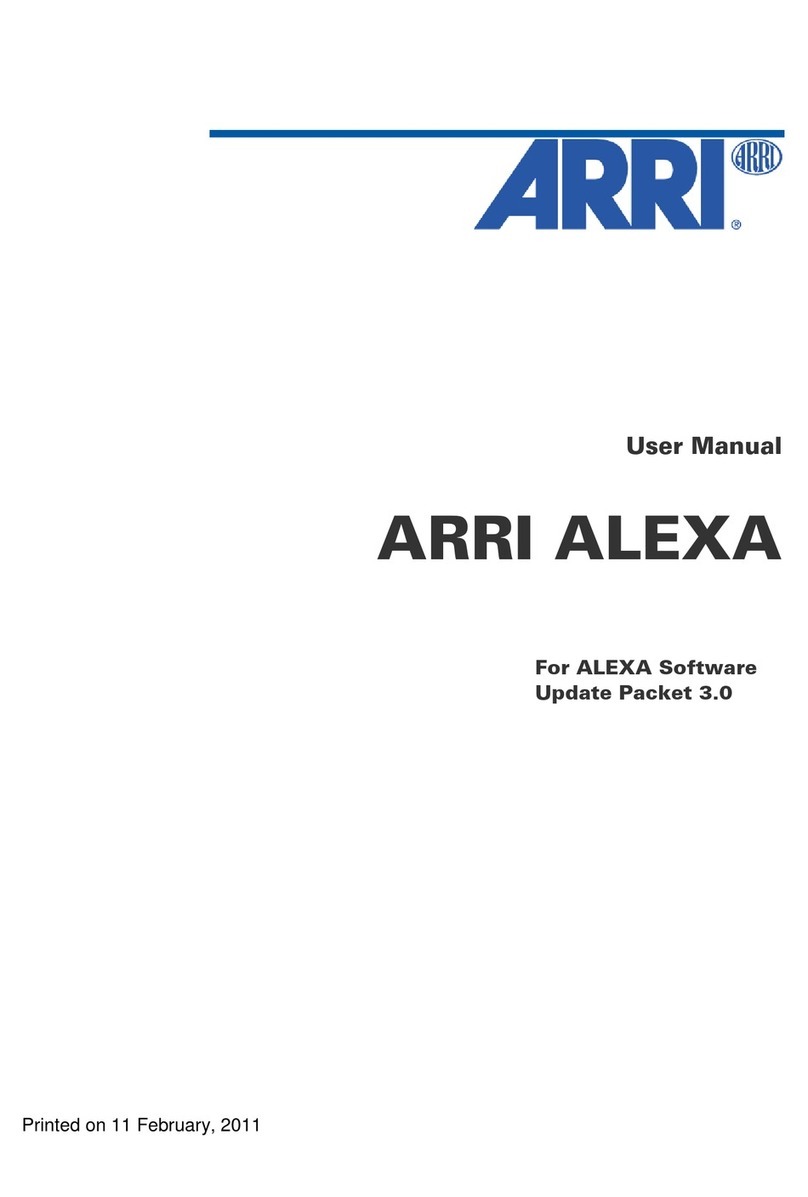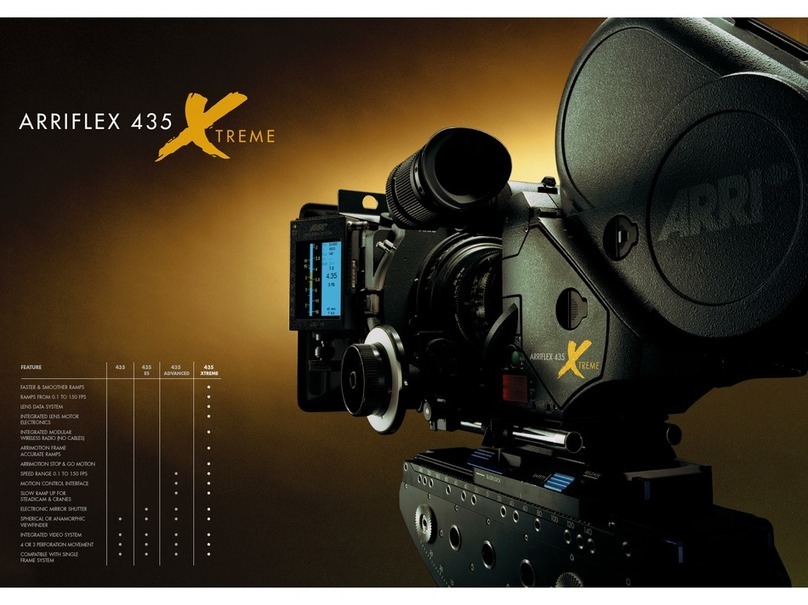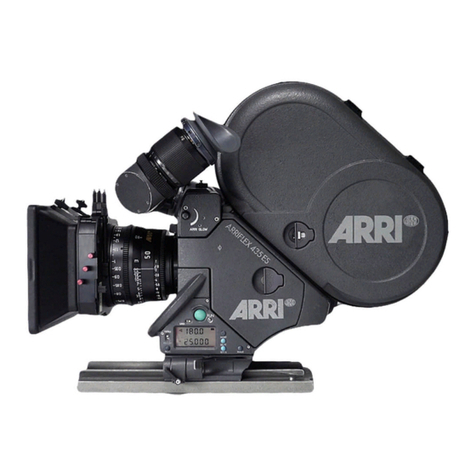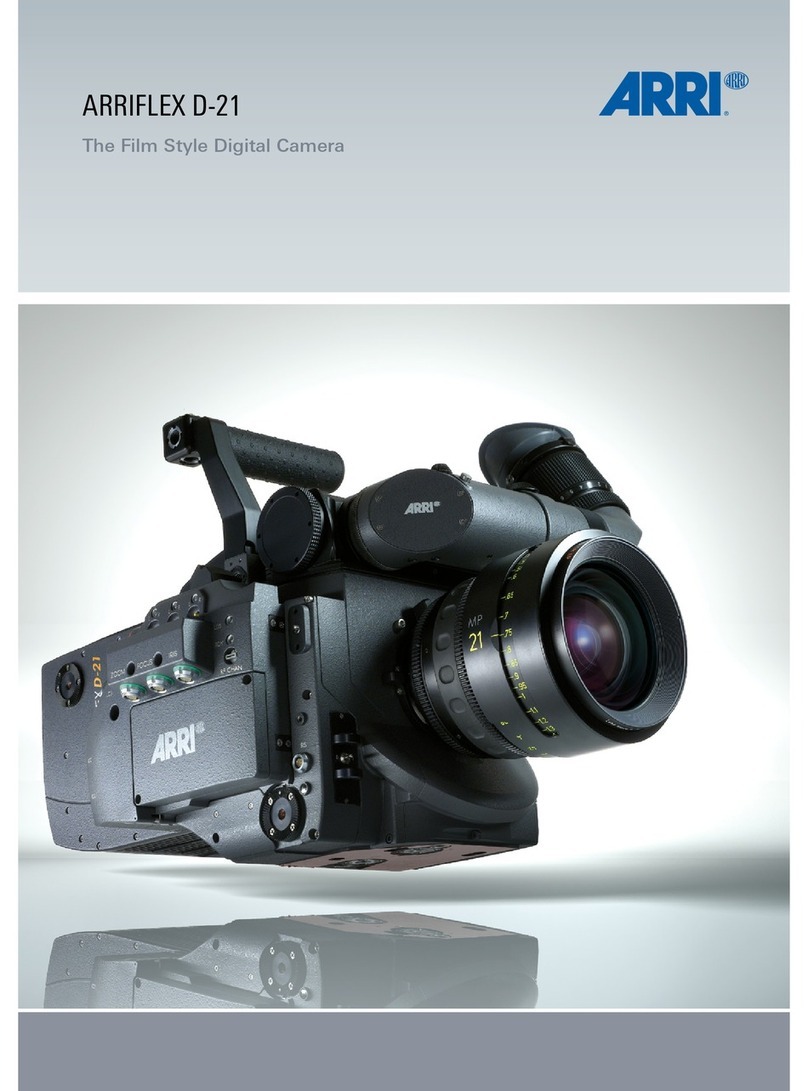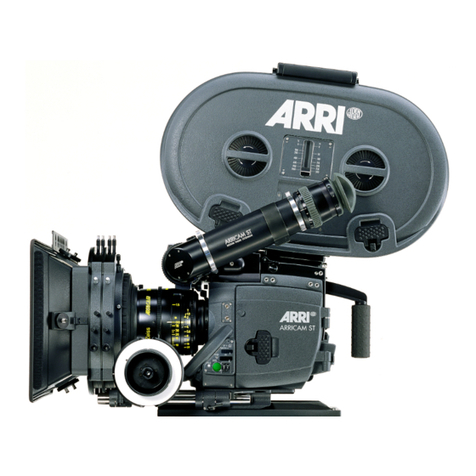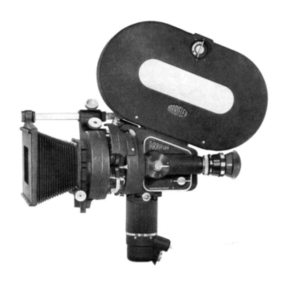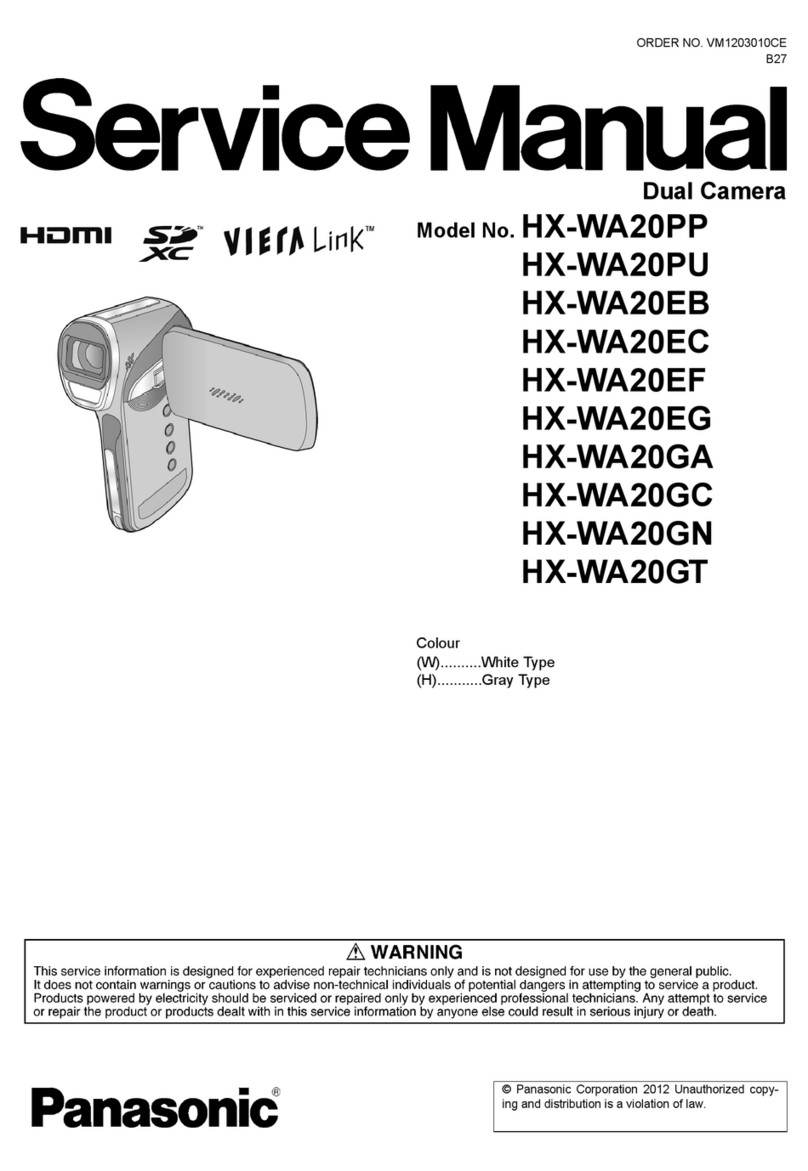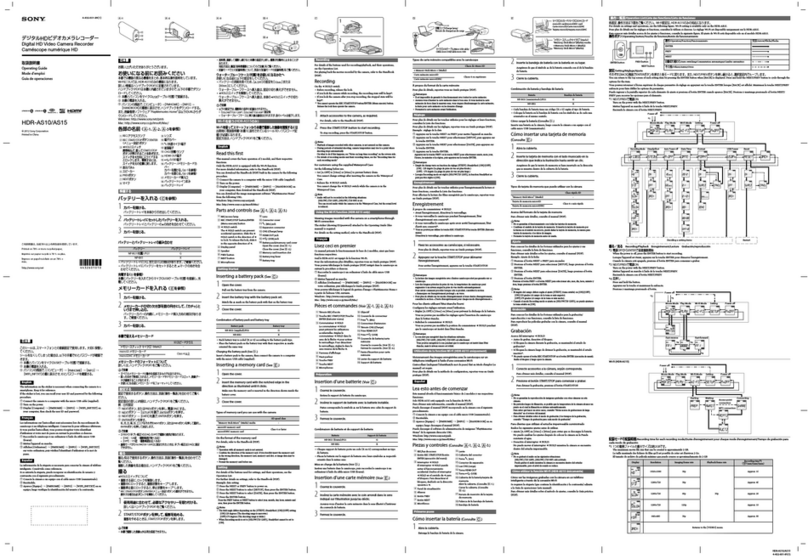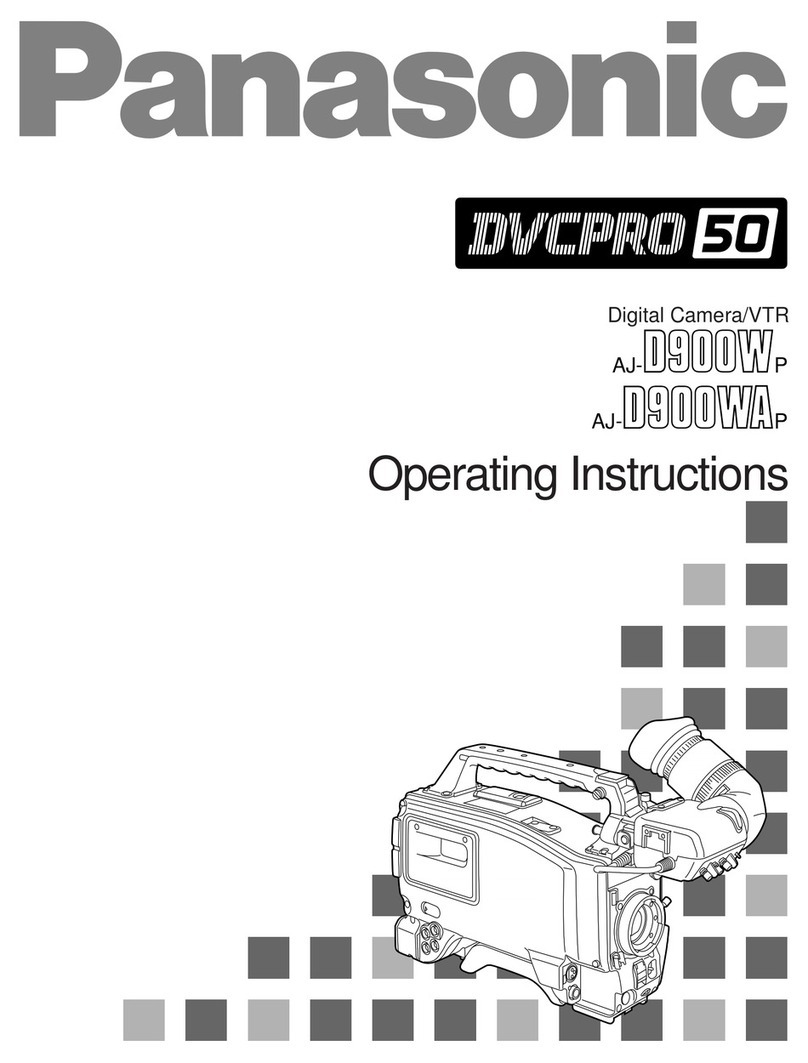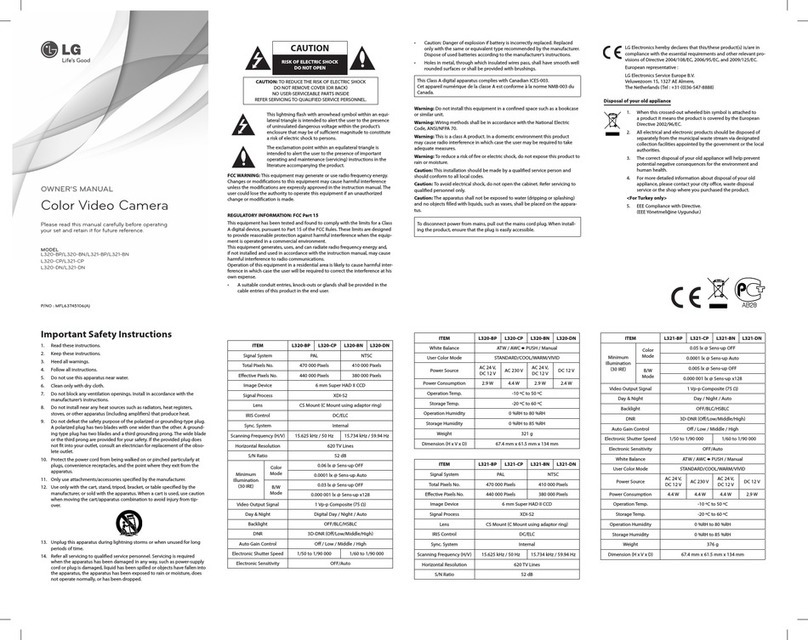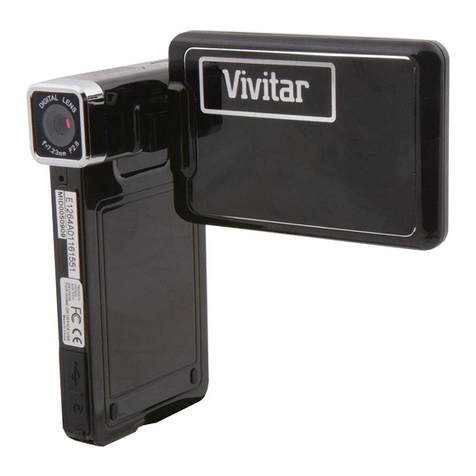ARRIFLEX D-21 / D-21 HD
The Film Style Digital Cameras
The ARRIFLEX D-21 and D-21 HD combine leading edge digital technology
with lm camera features that have been rened over ARRI’s 90-year history.
They allow directors and cinematographers to shoot in the same way as
they would with 35 mm lm, while taking advantage of the immediacy and
economy of digital acquisition.
As the top of the line digital cameras from ARRI, the market leader in
professional imaging, they are equipped with a number of unique features:
an optical viewnder, the MscopeTM anamorphic output, a 4:3 format sensor,
simple operation and an unequalled lm-like image quality. In addition, the
D-21 is the only camera capable of simultaneously outputting raw data and HD.
The bright optical viewnder has zero delay, works without power and
shows an image area outside the primary image. Through ARRI Imaging
Technology (AIT), both cameras produces brilliant images with a cinematic
look and feel, a high dynamic range, high contrast and the most lm-like
motion and color reproduction of any digital motion picture camera.
The cameras’ single, Super 35-sized CMOS sensor exhibits the same
cinematic depth of eld as 35 mm lm. The industry standard PL lens mount
accepts the same vast variety of prime, zoom and specialty lm lenses used
on 35 mm lm cameras. Since both cameras are the only digital high-end
cameras with a 4:3 aspect ratio sensor, they easily accommodate all im-
age formats, including anamorphic 2.40:1. The anamorphic image can be
recorded in the new and innovative MscopeTM mode, utilizing a standard HD
workow, or, on the D-21, also in Data Mode.
Further lm style features include variable frame rates from 1 to 60 fps
(D-21)/1-30 fps (D-21 HD), exposure compensated speed ramps, compat-
ibility with ARRI lm style accessories, simple to use controls and the robust
construction and ergonomic design for which ARRI cameras are famous.
The ARRIRAW format enables the D-21 to output raw uncompressed
data. Alternatively, both D-21 and D-21 HD can output an uncompressed
HD signal that works perfectly in the established HD infrastructure. With
such exibility, both ARRIFLEX D-21 and D-21 HD easily adapt to a variety of
production requirements and budgets.



